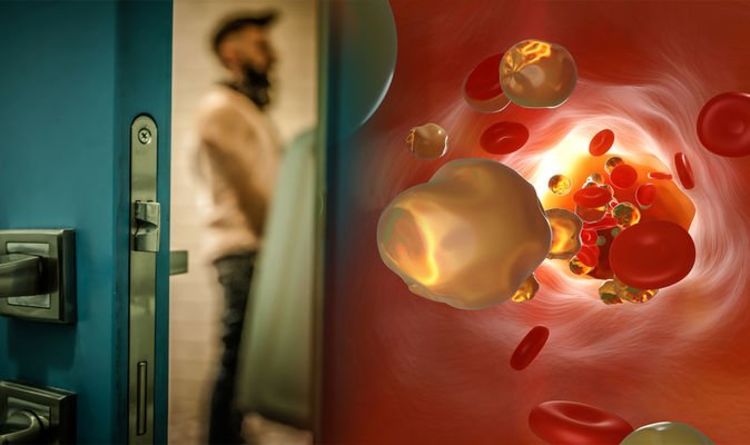This Morning's Dr Chris discusses the signs of high cholesterol
We use your sign-up to provide content in ways you’ve consented to and to improve our understanding of you. This may include adverts from us and 3rd parties based on our understanding. You can unsubscribe at any time. More info
Cholesterol is a waxy substance your liver makes to protect nerves and to make cell tissue and certain hormones. Your body also gets cholesterol from the food you eat which includes eggs, meats, and dairy. Too much bad cholesterol (LDL) can be bad for your health and could increase your risk of life-threatening conditions such as a heart attack or stroke. Having high cholesterol has also been linked to an unusual condition involving urine.
The body needs cholesterol to build healthy cells, however, high levels of cholesterol can increase a person’s risk of heart disease.
With high cholesterol, fatty deposits can develop in the blood vessels.
Eventually, these deposits grow, making it difficult for enough blood to flow through your arteries increasing the risk of cardiovascular diseases (CVD).

The correlation among metabolic syndrome, lower urinary tract symptoms, and CVD is not yet fully understood.
In particular, CVD has been proposed as a potential risk factor for both lower urinary tract symptoms progression and severity.
Studies have found that men with moderate to severe lower urinary tract symptoms seem to have an increased risk of major adverse cardiac events.
In a study published in the International Journal of Urology, serum cholesterol and its risk of lower urinary tract symptom progressions was investigated.
The study involved 2323 men to test the association between cholesterol, high-density lipoprotein ratio and incident lower urinary tract symptoms.
A total of 253 developed incident lower urinary tract symptoms.
On crude analysis, higher high-density lipoprotein was associated with a decreased lower urinary tract symptoms risk, whereas total cholesterol and low-density lipoprotein showed no association.
“After multivariable adjustment, the association between high-density lipoprotein and incident lower urinary tract symptoms remained significant, whereas no association was observed for low-density lipoprotein,” noted the study.

There was a trend for higher cholesterol to be linked with higher lower urinary tract symptoms risk, though this was not statistically significant.
The study added: “A higher cholesterol: high-density lipoprotein ratio was associated with increased lower urinary tract symptoms risk.”
The study concluded that among asymptomatic men, higher cholesterol was associated with increased incident lower urinary tract symptoms risk, though the association was not significant.
“A higher cholesterol: high-density lipoprotein ratio was associated with increased incident lower urinary tract symptoms, whereas higher high-density lipoprotein was protective.”
Lower urinary tract symptoms include:
- Hesitancy
- Poor and/or intermittent stream
- Straining
- Prolonged micturition
- Feeling of incomplete bladder emptying
- Dribbling.
- It can also cause storage or irritative symptoms such as frequency, urgency, urge incontinence, and nocturia.
Source: Read Full Article
